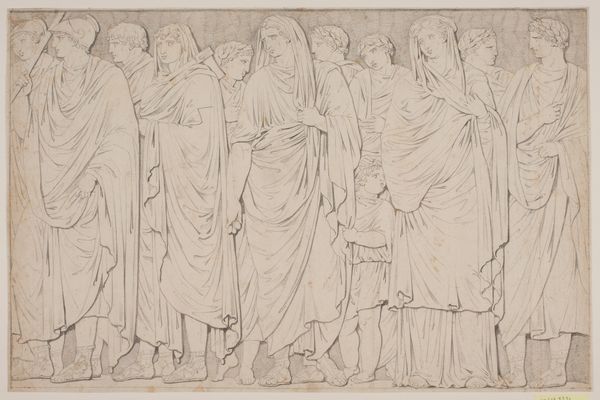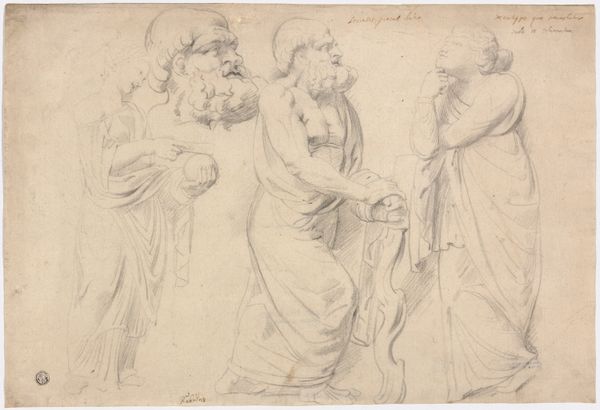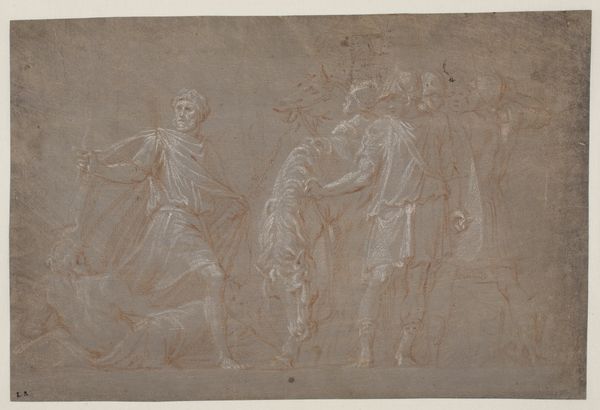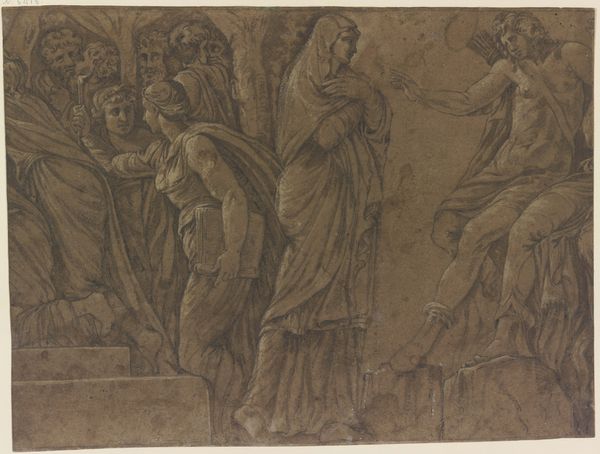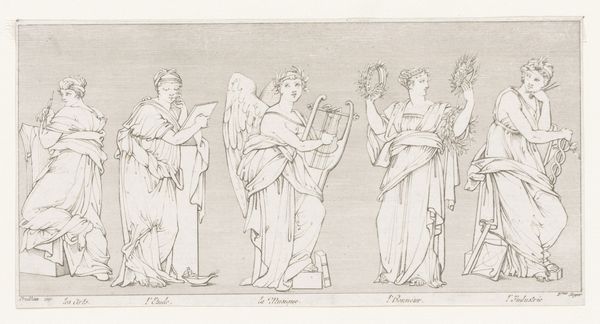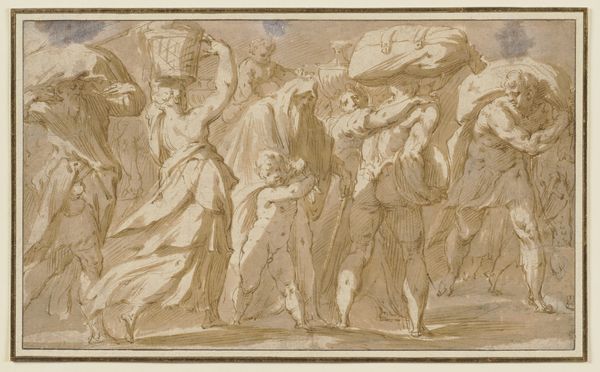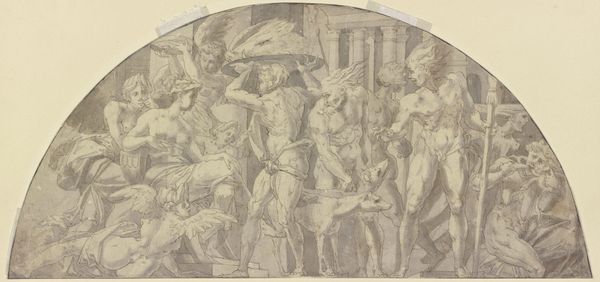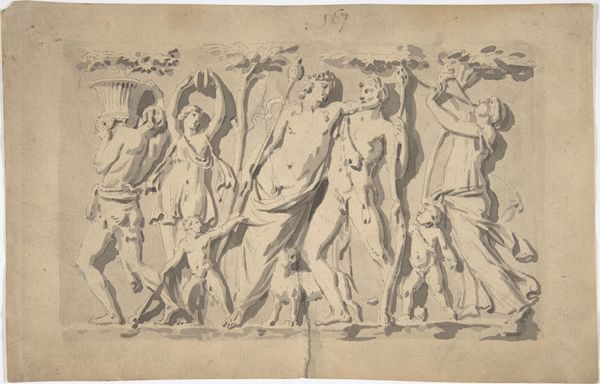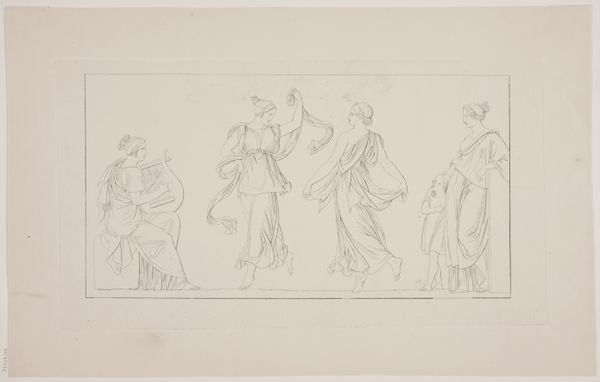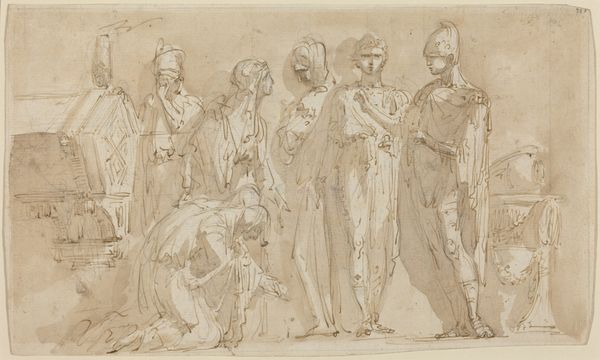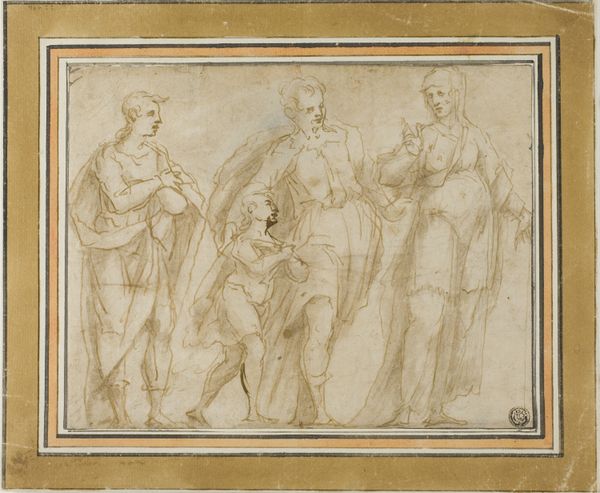
Optog med togaklædte, bekransede mænd 1717 - 1776
0:00
0:00
drawing, paper, pencil
#
portrait
#
drawing
#
pencil sketch
#
classical-realism
#
paper
#
pencil drawing
#
pencil
#
history-painting
Dimensions: 378 mm (height) x 480 mm (width) (bladmaal)
Editor: This drawing, titled "Procession with Toga-Clad, Wreathed Men" by Jacques François Joseph Saly, dates from 1717 to 1776 and is rendered in pencil on paper. The men seem stately, but there is a child at the front pulling at one of the toga-clad men’s robes. What's your take on this procession? Curator: The procession immediately places us within a visual language steeped in power, drawing heavily on classical Roman imagery. Consider the wreaths, the togas, symbols co-opted over centuries to signify authority. Yet, who holds this power? Notice how Saly, working in the 18th century, uses this Roman imagery not as a straightforward celebration of power but in conjunction with something quite different. Editor: You mean the child? Curator: Exactly. The child introduces a sense of disruption and a demand for attention, which creates a point of friction within this otherwise controlled performance of masculinity. The elite often leverage their status to reproduce privilege across generations. Saly appears to expose the way those narratives, in fact, involve living beings from all parts of society. How does Saly depict their relationship? Editor: Well, there's definitely tension, the adult is looking away from the child who is tugging on his clothes, demanding attention, interrupting the perfect procession... Curator: And does this suggest any relationship to contemporary dialogues surrounding class or intergenerational equity? Does it suggest that classical ideals, despite their aesthetic appeal, often require obscuring the realities of everyday life, the demands of those rendered invisible? Editor: I never considered the image this way, as a critique of the status quo! Now, I see the child's gesture as an active disruption and almost a symbol of resistance. Curator: Precisely! These seemingly historical images can ignite new dialogues on present-day disparities. Seeing the piece through a socio-political lens transforms what we thought we knew.
Comments
No comments
Be the first to comment and join the conversation on the ultimate creative platform.
